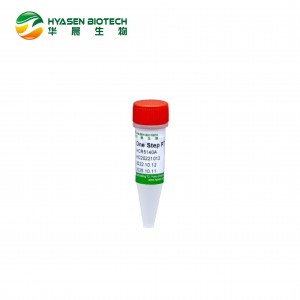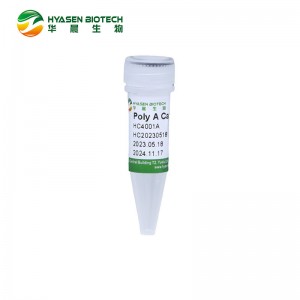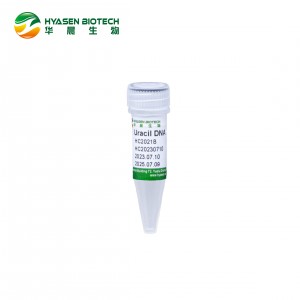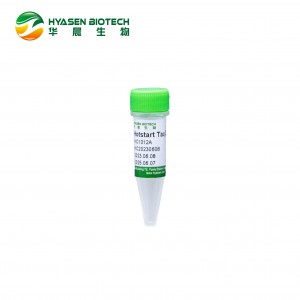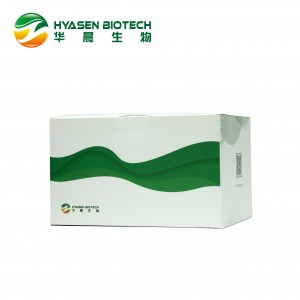
Rnase Inhibitor
Murine RNase inhibitor is a recombinant murine RNase inhibitor expressed and purified from E.coli. It binds to RNase A, B or C in a 1:1 ratio through non-covalent bonding, thereby inhibiting the activity of the three enzymes and protecting RNA from degradation. However, It is not effective against RNase 1, RNase T1, S1 Nuclease, RNase H or RNase from Aspergillus. Murine RNase inhibitor was tested by RT-PCR, RT-qPCR and IVT mRNA, and was compatible with various commercial Reverse transcriptases, DNA polymerases and RNA polymerases.
Compared to human RNase inhibitors, murine RNase inhibitor does not contain two cysteines that are highly sensitive to oxidation which causes inactivation of the inhibitor. That making it stable at low concentrations of DTT (less than 1 mM). This feature makes it suitable for use in reactions where high concentrations of DTT is adverse to the reaction (e.g. Real-time RT-PCR).
Application
This product can be widely used in any experiment where RNase interference is possible to avoid RNA degradation, such as:
1.Synthesis of the first strand of cDNA, RT-PCR, RT-qPCR, etc.
2.Protects RNA from degradation during in vitro transcription/translation (e.g., in vitro viral replication system).
3.Inhibition of RNase activity during RNA separation and purification.
Storage Conditions
The product can be stored at -25~- 15 ℃, valid for 2 years.
Storage buffer
50 mM KCl, 20 mM HEPES-KOH (pH 7.6, 25 ℃), 8 mM DTT and 50% glycerol.
Unit definition
The amount of murine RNase inhibitor required to inhibit the activity of 5ng of ribonuclease A by 50% was defined as one unit (U).
Molecular weight of protein
The molecular weight of murine RNase inhibitor is 50 kDa.
Quality control
Exonuclease Activity:
40 U of murine RNase inhibitor with 1 μg λ -Hind III digest DNA at 37℃ for 16 hours yields no degradation as determined by agarose gel electrophoresis.
Endonuclease Activity:
40 U of murine RNase inhibitor with 1μ g λ DNA at 37℃ for 16 hours yields no degradation as determined by agarose gel electrophoresis.
Nicking Activity:
40U of murine RNase inhibitor with 1μ g pBR322 at 37℃ for 16 hours yields no degradation as determined by agarose gel electrophoresis.
RNase Activity:
40U of murine RNase inhibitor with 1.6μ g MS2 RNA for 4h at 37℃ yields no degradation as determined by agarose gel electrophoresis.
E.coli DNA:
40 U of murine RNase inhibitor is screened for the presence of E. coli genomic DNA using TaqMan qPCR with primers specific for the E. coli 16S rRNA locus. The E. coli genomic DNA contamination is ≤ 0.1 pg/40 U.
Notes
1.Violent oscillation or stirring will lead to enzyme inactivation.
2.The optimum temperature range of this the inhibitor was 25-55 ℃ , and It was inactivated at 65℃ and above.
3.The activities of RNase H, RNase 1 and RNase T1 were not inhibited by murine RNase inhibitor.
4.The inhibition of RNase activity was found in a wide range of pH (pH 5-9 were all active), and the highest activity was observed at pH 7-8.
5.Since ribonucleases typically retain activity under denaturing conditions, care must be taken to avoid denaturing RNase Inhibitor molecules which have complexed with a ribonuclease. To prevent the release of active ribonuclease, temperatures greater than 50 °C and high concentrations of urea or other denaturing agents should be avoided.






